The history of offer sheets in the NHL is a long one. While there hasn’t been a successful offer sheet since the Edmonton Oilers signed Dustin Penner to one in 2007, there is still some significant history that has come from the offer sheet both prior to and following the 2007 season. While this article won’t look at every single offer sheet in NHL history, it will look at some of the biggest and most impactful ones.
Famous NHL RFA 1991 – Blues Sign Shanahan, Lose Stevens
The St. Louis Blues were big game hunters in the early ‘90s when it came to free agents. The season before, they’d signed Capitals restricted free agent defenseman Scott Stevens to an offer sheet for four years at a total of $5.1 million; as compensation, the Capitals were awarded five first-round draft picks.
In the summer of 1991, the Blues were coming off a 47-22-11 season – one where winger Brett Hull scored 86 goals in 80 games – before losing to the division-rival North Stars in the playoffs.
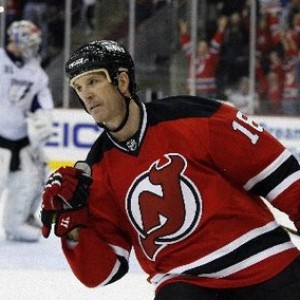
Looking to continue to improve his team, Blues GM Ron Caron signed RFA Brendan Shanahan of the New Jersey Devils. At that time, players or draft picks could be awarded as compensation. After the signing, both sides would present compensation packages to an arbitrator, who would then decide which was a ‘fair amount’ of compensation for the newly-signed player. Since the Blues had already lost their next five first-rounders as compensation in the Stevens signing, the teams needed to negotiate the compensation package.
The Blues offered Curtis Joseph and Rod Brind’amour – both essentially rookies at the time; the Devils requested Scott Stevens. The arbitrator sided with New Jersey, providing them with the man who would patrol their blueline for 13 seasons and captain them to their 3 Stanley Cup victories, winning a Conn Smythe Trophy along the way.
(Postscript: In 1994, as an RFA, Stevens signed an offer sheet with the St. Louis Blues; wisely, the Devils matched. Not-so-wisely, the Blues were found guilty of tampering by contacting Stevens while he was still under contract; the Devils were awarded a first-round draft pick and $1.45 million.)
Famous NHL RFA 1991 – Rangers Grab Gravy
The road from Edmonton to New York would eventually be well-worn but was uncharted territory when Rangers GM Neil Smith signed gritty winger Adam Graves from the Oilers. An arbitrator awarded winger Troy Mallette to the Edmonton Oilers; the Oilers traded Mallette to the New Jersey Devils after 15 games.
Mallette would never match the career-high 29 points he scored in his rookie season, while Graves would go on to have four seasons of 30 goals or more, including 52 goals in 1993-94.
(Postscript: Graves played one game – the season opener against Boston – wearing #11. The next day, the Rangers acquired Mark Messier, the man for whom that number would ultimately be retired by the Rangers, continuing the eastward movement of Oilers.)
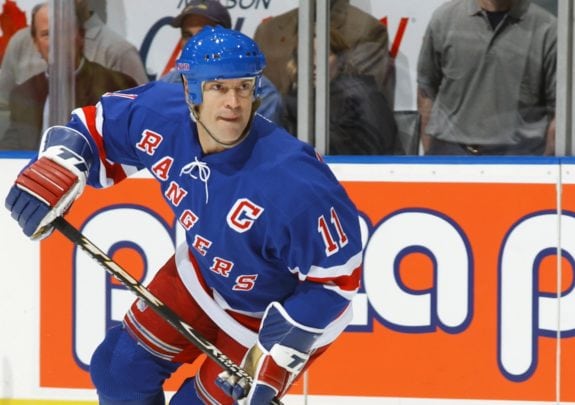
Famous NHL RFA 1994 – St. Louis Nabs Nedved
The Blues’ continued courtship of RFAs led them to Vancouver center Petr Nedved, a restricted free agent who had held out of camp and not suited up for any of the Canucks’ games that season. After signing the Czech forward, both teams submitted their compensation proposals to an arbitrator.
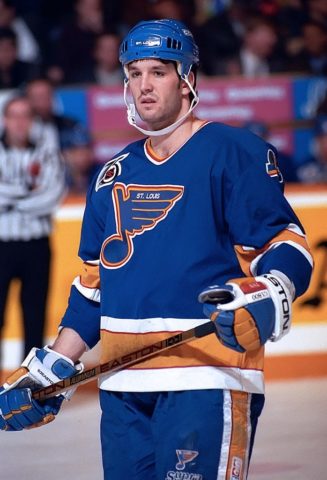
St. Louis offered center Craig Janney and a second-round draft pick; Vancouver requested forward Brendan Shanahan. The arbitrator sided with the Blues (though not until 11 days later, allowing Nedved to play in St. Louis alongside the players who would eventually be awarded to the Canucks as compensation, much to the ire of the other general managers in the league).
A few weeks later, at the NHL trade deadline, the Canucks traded Janney (who had refused to report to Vancouver) back to St. Louis for center Nathan Lafayette and defensemen Jeff Brown and Bret Hedican – all of whom would play key roles in the Canucks’ 1994 playoff run, where they ultimately lost to the Rangers in Game 7 of the finals.
(Postscript: Nedved’s stay in St. Louis would be short-lived. In the offseason following his acquisition, the Blues were found guilty of tampering, having met with Rangers’ Stanley Cup-winning coach Mike Keenan during the playoffs before signing him as the coach and general manager in the offseason. As compensation, the Rangers were able to trade an aging Esa Tikkanen and an already-aged Doug Lidster to the Blues for Nedved.)
Famous NHL RFA 1995 – The Blues Are At It Again, This Time for Corson
After losing Petr Nedved, the St. Louis Blues decided to go after Edmonton center Shayne Corson. The one-time Oilers captain had been stripped of the captaincy late in the season, and the Blues thought they’d be able to pry the physical forward out of Alberta. Predictably, the Oilers did not match the offer, opting instead for draft picks as compensation. Rather than lose the arbitrator-awarded draft picks, new GM Mike Keenan decided to offer forward Mike Grier and goaltender Curtis Joseph to the Oilers instead. The Oilers quickly agreed, essentially turning the signing into a swap of Corson for Joseph and Grier.

The deal made the Oilers immediately competitive, with Joseph backstopping the team into first-round playoff upsets in 1997 and 1998. The Blues, on the other hand, attempted to mimic the Rangers’ success of 1994, with coach/GM Mike Keenan bringing in veterans – mostly former Oilers – like Grant Fuhr, Glenn Anderson, Esa Tikkanen, and, later that season, Wayne Gretzky. Gretzky left in the offseason. Keenan only lasted one more full season.
Famous NHL RFA 1997 – Gratton Traded and Signed, Then Traded Back
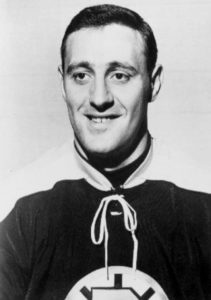
Prior to Dustin Penner, Chris Gratton was the last player to actually change teams as a result of an offer sheet. He was also nearly traded to a different team on the same day. On Aug. 12, 1997, the Tampa Bay Lightning and Chicago Blackhawks agreed to a trade that would send Gratton to the Windy City in return for a package that included center Steve Dubinsky, defenseman Keith Carney, and one of either Eric Daze or Ethan Moreau.
The problem? Earlier that day, Gratton received an offer sheet from the Philadelphia Flyers. Tampa GM Phil Esposito claimed that a smudge on the faxed offer sheet invalidated the offer sheet and that the trade should stand. Not surprisingly, an arbitrator ruled that the offer sheet was valid, and Tampa Bay was awarded draft picks as compensation. The Lightning immediately dealt those draft picks back to the Flyers for former Legion-of-Doom winger Mikael Renberg and defenseman Karl Dykhuis.
(Postscript: The following season, Gratton would be traded back to Tampa Bay, along with center Mike Sillinger. Going the other way? Daymond Langkow and Mikael Renberg.)
Famous NHL RFA 2007 – Penner Goes to Edmonton
Just three weeks after making an offer to the Sabres’ Thomas Vanek, the Edmonton Oilers gave it another shot, this time going after the Anaheim Ducks.

The aforementioned Penner, the last player to change teams as a result of an offer sheet, was coming off a Stanley Cup Championship with the Ducks when Oilers’ GM Kevin Lowe dropped an offer sheet in his inbox. The five-year, $21.5 million dollar deal handcuffed Ducks’ GM Brian Burke, who was forced to let Penner go to Edmonton in order to keep his team under the salary cap.
The Ducks needed to resign star forwards Corey Perry and Ryan Getzlaf, as well as future hall of famers Scott Niedermayer and Teemu Selanne, who were reportedly considering retirement. Both ultimately came back the following year.
The offer also kicked off a feud between the two managers, with the CBC reporting on Burke calling Edmonton’s offer “mostly inflated salary for a player, and […] an act of desperation for a general manager who is fighting to keep his job.”
Ultimately, the Ducks declined to match and received three draft picks from the Oilers as compensation. To this day, the offer sheet that saw Penner land in Edmonton is still the last successful offer sheet in the NHL.
Matched NHL Offer Sheets
When the original team elects to match the NHL offer sheet, it’s likely that they’d planned on keeping the player all along; the drama of the offer sheet is mostly between the media and the fans, wondering what might have been. Here are a few NHL offer sheets where the player re-signed with his team. Take a look, and wonder how those prospective teams may have changed if they were able to sign those RFAs.
1991 – Kevin Stevens (Pittsburgh) – NHL Offer Sheet from Bruins
Boston-born and educated (Boston College), it seemed fitting for Stevens to suit up with the Bruins. That was their hope when they signed him to an NHL offer sheet in the summer of 1991. The Penguins, fresh off a Stanley Cup victory, looked to retain one of their two 40-goal scorers (Mark Recchi was the other) and matched immediately.
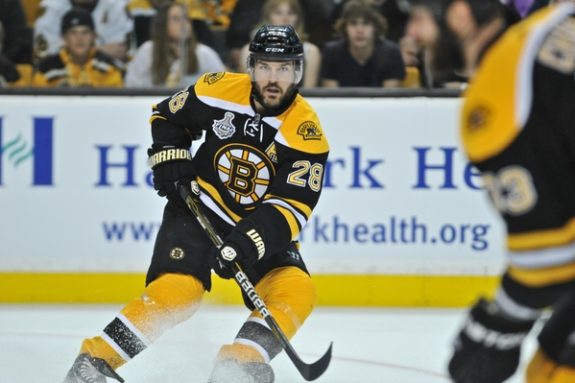
Stevens would go on to have career highs in goals (54), assists (69), and points (123), playing a full season alongside Mario Lemieux. Stevens did return to Boston that season, scoring four goals for the Penguins in Game 3 of their Conference Finals matchup, which the Pens would go on to sweep on the way to their second straight Stanley Cup championship.
1992 – Teemu Selanne (Winnipeg) – NHL Offer Sheet from Flames
Offer sheets are limited to players who have played a certain number of NHL games and completed their first NHL contract. Back in 1992, however, the Calgary Flames presented an NHL offer sheet to a forward who had not yet played in his first NHL game.
The Flames offered the Finnish Flash a three-year deal at $400,000 per season, plus a $1.5 million signing bonus, as reported by the Winnipeg Free Press. Keep in mind, in 1992, that was a huge contract. Wayne Gretzky was the highest-paid player at $3 million, leading scorer Mario Lemieux was bringing home $2.3 million, and Norris-trophy-winning defenseman Brian Leetch was earning a whopping $250,000.

The Jets quickly matched the contract and it’s a good thing they did as Selanne would go on to score a rookie-record 76 goals the following season.
1997 – Joe Sakic (Colorado) – NHL Offer Sheet from Rangers

The New York Rangers had just watched captain Mark Messier sign in Vancouver and needed to make a move. They were coming off Wayne Gretzky’s first season in New York and looking to find a way to improve a lineup that included Adam Graves and underperforming Luc Robitaille on the wings.
The Avalanche matched the offer sheet for their captain, forcing the Rangers to turn to Plan B – Pat LaFontaine. LaFontaine tied for the team lead in scoring (23) with Gretzky and Alexei Kovalev, before suffering a career-ending concussion in March of 1998.
After they’d matched the NHL offer sheet, Avs GM Pierre LaCroix sent a fax to Rangers’ GM Neil Smith of Nelson Rockefeller extending his middle finger. You know, just to show his gratitude for the Rangers’ offer sheet and the impact on the Colorado franchise’s finances.
1998 – Sergei Fedorov (Detroit) – NHL Offer Sheet From Hurricanes

Fresh off the winning the Stanley Cup with the Red Wings, restricted free agent Sergei Fedorov and the Red Wings were far apart in contract negotiations. Rather than compromise, the Russian center opted to hold out for the 1997-98 season until his demands were met. In an interview with Detroit’s WJBK, Fedorov said,
“There’s been precedence – back in the early or late ’70s when [former Montreal goalie] Ken Dryden sat out one year, and, boy, did he make the money. I can see myself doing that. Why not? Because it’s not about money. Because it’s about what I believe in.”
In January of 1998, 59 games into the season and three-and-a-half months into his holdout, the Carolina Hurricanes came calling with an NHL offer sheet. According to Sports Illustrated, the proposed deal to Fedorov was: $14 million for signing, $2 million for 21 regular season games, and $12 million for the team reaching conference finals, resulting in a total of $28 million for 43 total games in 1997–98. After an arbitrator ruled that the offer sheet was valid, Detroit matched the offer. Fedorov returned to the Wings and finished second in playoff scoring as he helped them win their second consecutive Stanley Cup. He would go on to play five more seasons in Detroit.
2006 – Ryan Kesler (Vancouver) – NHL Offer Sheet from Flyers
The Vancouver Canucks were perilously close to the salary cap when the Flyers surprisingly tendered an offer sheet to future-Selke-winning forward Ryan Kesler. With captain Keith Primeau heading into retirement, the Flyers were looking to reinforce a forward corps with little depth beyond their top line of Peter Forsberg, Simon Gagne, and Mike Knuble. While the price – $1.9 million, was high, the Canucks matched to keep Kesler.

Kesler was traded to the Anaheim Ducks in 2014 and signed a six-year contract extension worth $41.25 million one offseason later. Still playing stellar defensive hockey and making an impact on the ice and in the locker room with the Ducks, Kesler remains as valuable a player for the Ducks as he was for the Canucks.
2007 – Thomas Vanek (Buffalo) – NHL Offer Sheet from Oilers
It was a great season for the Buffalo Sabres in 2006-07 — the team finished first in the Eastern Conference, making it as far as the Eastern Conference Finals before losing to the eventual Stanley Cup Champion Carolina Hurricanes. The offseason that followed, though, was catastrophic. Forwards Danny Briere, Chris Drury, and Dainius Zubrus all left via free agency.
The Edmonton Oilers, coming off a terrible season, were looking to make a big move. Sabres GM Darcy Regier heard rumors that the Oilers were planning on making an offer sheet on 43-goal scorer Thomas Vanek. He called Kevin Lowe, then then-Oilers’ general manager, to advise that any offer sheet would be matched and that Lowe would be wasting his time. Lowe went ahead anyway, offering Vanek a staggering seven-year, $50 million contract. As expected, Regier matched the deal. While still a top-line player with Buffalo, Vanek never matched his career highs in goals and points from the 2006-07 season.
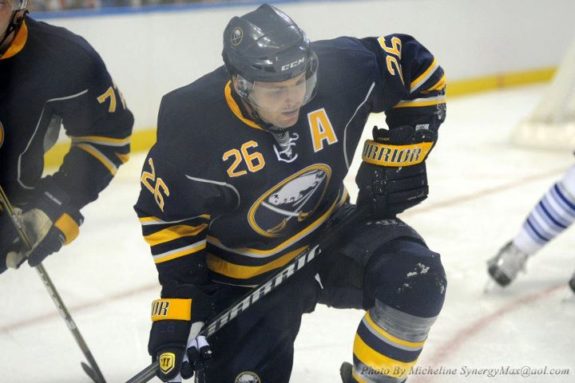
Vanek was eventually traded to the New York Islanders in 2013-14 and was later traded to the Montreal Canadiens at the trade deadline of that same season. Signing a three-year contract in Minnesota after a disappointing postseason run in Montreal, Vanek would only play two years with the Wild before being bought out and signing a one-year deal with the Detroit Red Wings, who later traded him at the deadline in 2016-17 to the Florida Panthers. Vanek went on to sign a one-year contract with the Vancouver Canucks in 2017-18.
2010 – Niklas Hjalmarsson (Chicago) – NHL Offer Sheet from Sharks
It was well-reported that the Blackhawks would have a difficult time retaining the core of their Stanley Cup Championship team. At the salary cap limit and with restricted free agents to re-sign, the team knew it would have to make trades and let players leave, having already traded away Dustin Byfuglien, Ben Eager, Brent Sopel, Andrew Ladd, and Kris Versteeg.
The Sharks forced their hand on defenseman Niklas Hjalmarsson by signing him to an NHL offer sheet. Having little space to work with, but hesitant to lose the up-and-coming blueliner, general manager Stan Bowman matched the offer. This left little room for goaltender Antti Niemi.

With contract talks stalled, the Hawks and Niemi went to arbitration. The arbitrator awarded Niemi a $2.75 million contract, which the Hawks were unable to fit under the cap, forcing them to let Niemi walk as a free agent. Niemi later signed with the San Jose Sharks – the same Sharks who had tendered the offer sheet to Hjalmarsson in the first place. Niemi played in San Jose for five seasons before moving on to the Dallas Stars in 2016-17. He signed a new contract for the 2017-18 season with the Pittsburgh Penguins and allowed 16 goals in three games before being placed on waivers and subsequently claimed by the Florida Panthers.
2012 – Shea Weber (Nashville) – NHL Offer Sheet From Flyers
In 2012, the biggest contract in the history of offer sheets in the NHL was signed by Shea Weber. With the Philadelphia Flyers looking to replace the production of Chris Pronger who had suffered a terrible injury earlier in the season as a result of a high stick, Weber was the clear solution to their problems.

The contract itself was seemingly designed to be impossible for the Predators to match – a 14-year deal worth $110 million with $80 million coming in the first six years of the deal. The cost of such an offer sheet would have been the next four first-round draft picks of the Flyers – a steep price but one then-general manager Paul Holmgren was willing to pay in an attempt to replace Pronger – one of the best blueliners in the entire league at the time who’s prospect of returning didn’t look very promising at the time.
As history should have it, the Predators did match the contract and retained their star blueliner in the process. The Predators had already lost defenseman Ryan Suter to the Minnesota Wild as an unrestricted free agent earlier in the offseason and they were not about to lose their other top defender as well.
Predators Moved on From Weber on Their Own Terms
Building a team that prided itself on defense, Weber was the stalwart of that blue line for years. When the opportunity arose to move on from Weber – who was set to enter his age-31 season in 2016-17, the Predators ultimately traded Weber to the Montreal Canadiens for another top blueliner in P.K. Subban in a move that saw their mobility increase. Despite still being on a list of teams to have never won the Stanley Cup, the Predators were finally able to win a playoff series that very same season. In fact, they qualified for their first Stanley Cup Final in the process.
2013 – Ryan O’Reilly (Colorado) – NHL Offer Sheet From Flames
In the most recent example of an offer sheet being signed in the NHL, the Calgary Flames signed forward Ryan O’Reilly to a two-year offer sheet worth $10 million in February of 2013. It was an offer sheet that had a lot of implications as O’Reilly had been in a standoff with the Avalanche in search of a new contract that season.

Playing overseas with Magnitogorsk Metallurg of the KHL during the lockout that started the 2012-13 season, O’Reilly had scored five goals and 10 points in 12 games with his club overseas while awaiting a new NHL contract. Both O’Reilly and the Avalanche were playing hardball until the Flames stepped in and looked to make things easier for both sides.
A new contract for O’Reilly. A very talented young player for the Flames. And finally, a first-round draft pick and a third-round draft in 2013 for the Avalanche. It seemed like a win-win for both sides. That would have been the case had the Avalanche deemed that return adequate for a player of O’Reilly’s caliber – something they obviously didn’t as they matched the deal.
Flames Dodged a Bullet
This news may have seemed bad for the Flames at the time, but it wasn’t long until it was pointed out that the Flames dodged a major bullet with the Avalanche matching the contract. Due to the fact that O’Reilly had already played in two games in the KHL following the start of the NHL season, he would have required waivers had the Avalanche failed to match the offer. The Flames would have still been charged their two draft picks, but they likely wouldn’t have walked away with O’Reilly at the end of the day.
O’Reilly was eventually signed to another two-year contract with the Avalanche following the aforementioned two-year deal, and he was later traded to the Buffalo Sabres ahead of the 2015-16 season. He later signed a lucrative 7-year, $52 million contract ahead of the 2016-17 season to remain in Buffalo and has found a lot of success as the team’s top-line center.
This article was originally written in July 2012.
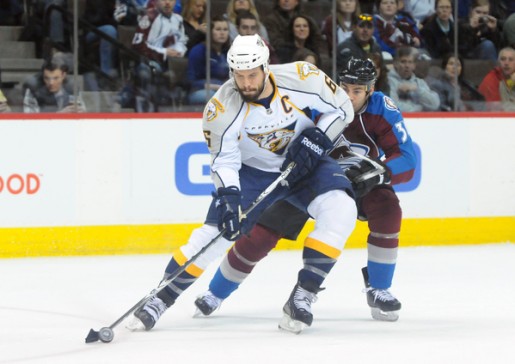
Fascinating history, there! It’s really something to be reminded of what a player St. Louis was in the early-to-mid 90s.